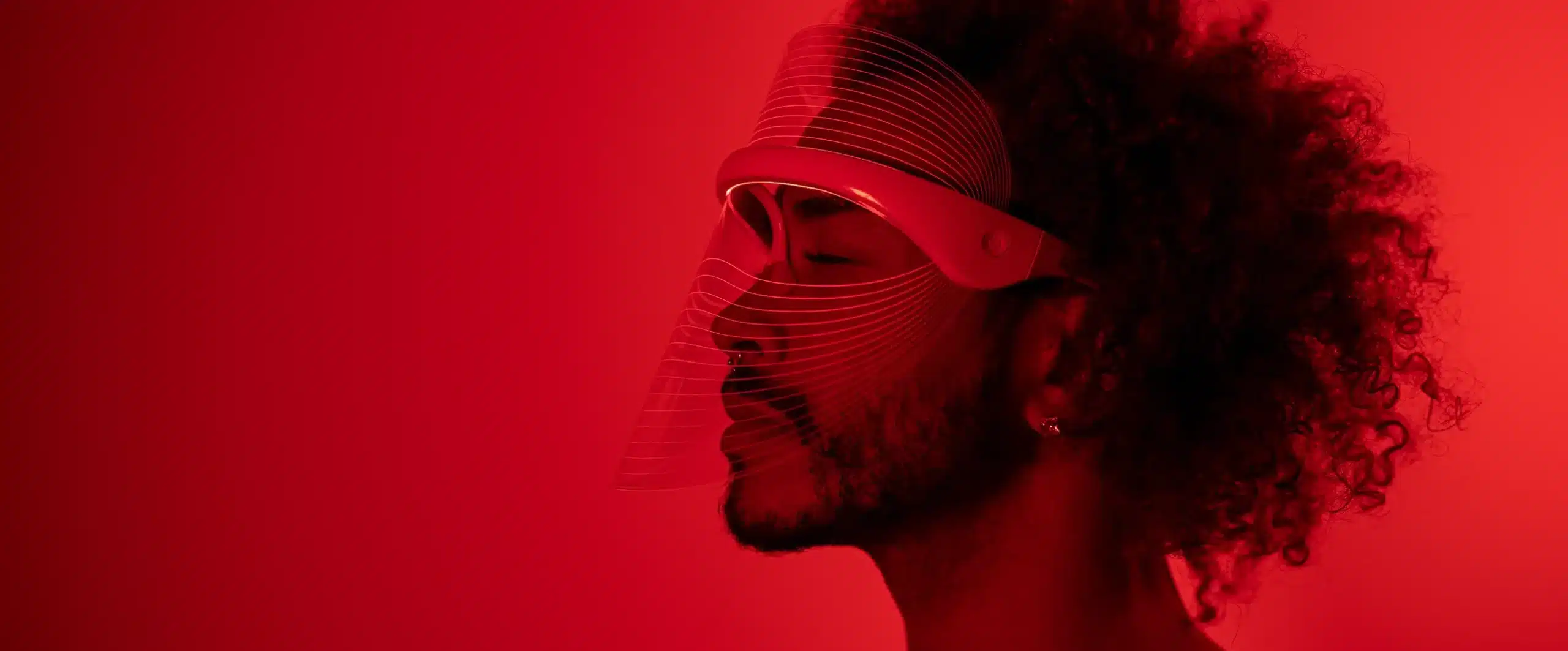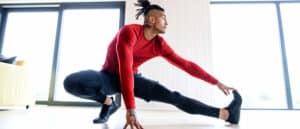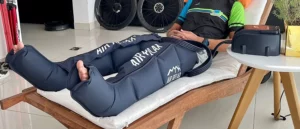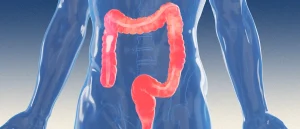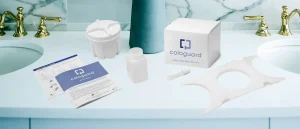The Pros (and Cons) That Prove Red Light Therapy Isn’t Just Hype
One thing’s for sure: The wellness world offers no shortage of recovery tools. And in a sea of saunas, massage guns, and quick-fix detox drinks, a well-researched, multi-purpose solution like red light therapy stands out. Whether you’re hoping to go harder in the gym, want to take better care of your complexion, or mitigate thinning hair, a few minutes under red light therapy’s warm rays may actually be worth it. Read on to learn why.
What Is Red Light Therapy?
Red light therapy, also called photobiomodulation therapy or low-level laser light therapy (LLLT), uses LED lights to send low-wave energy to the body’s cells, explains Jason Williams, C.P.T. and wellbeing coach at CharmCityPT. Its versatile benefits were first discovered when NASA used it in the early 1990s in a plant growth experiment and, as a byproduct, scientists found that their skin lesions also began to heal faster. “Red light is bioactive in humans,” adds Craig Ziering, M.D., board-certified dermatologist and founder of Ziering Medical. “The body responds to it beneficially similar to how plants respond to sunlight.”
NASA’s accidental discovery launched a wave of research on the technology, and it has since been touted as a multi-faceted healing and restoring device.
How Does Red Light Therapy Work?
Red light therapy is unique in that it can penetrate deep past the skin without causing a surface lesion, and it’s believed to work by providing energy in the form of photons to the cells’ mitochondria (aka their powerhouse), allowing them to grow faster and perform bodily functions such as skin repair and muscle recovery more efficiently.
Red Light Therapy Pros and Cons
Pros
- Painless and non-invasive
- Accessible
- Wide-reaching benefits
Cons
- Expensive
- Can react with certain medications
- Needs to be used consistently
Red Light Therapy Pros
The pros of red light therapy certainly outweigh the cons.
It’s Painless and Non-invasive
Studies have touted red light therapy as a non-invasive treatment that shows no adverse side effects. Dr. Ziering adds that it’s safe and painless, and unlike other ablation-centered laser treatments, it leaves no surface scar or incision behind.
It’s Becoming Increasingly Accessible
While offices like Dr. Ziering’s offer medical-grade red light treatments, there are more accessible at-home options on the market, including LED face masks and standing light panels. Williams’ go-to personal device comes from Hooga Health.
Red Light Therapy Cons
It Can Be Expensive
Although the technology is pinned down, and you can add a number of gadgets to your cart in a matter of seconds, they don’t come cheap. Most are at least $100 and the price only goes up from there.
It May React With Certain Medications
Dr. Ziering says those on medications that can cause hyper-sensitivities to LED energy, such as lithium or isotretinoin, may be more vulnerable to red light therapy. Lithium is regularly used to treat mood disorders such as bipolar disorder and isotretinoin, commonly known by the brand name Accutane, is prescribed to treat severe cystic acne.
Red Light Therapy Uses
At its core, red light therapy is believed to improve cellular function, which is why its applications are so wide-reaching—cells make up our entire bodies, after all. Here are some of the most common ways red light therapy is used.
Improved Strength Training
One 2016 study (1) published in Lasers in Medical Science tested red light therapy’s efficacy in improving strength training. In 48 volunteers whose experiences were compared to a placebo, researchers found that it “enhanced strength gains” when applied before exercise. Another 2016 review (2) of studies examined red light therapy’s overall impact on sports performance and found that it can increase athletes’ performance when used before and after exercise.
Boosted Endurance
Red light therapy is energy in light form, which explains why it may have somewhat of an Energizer Bunny effect. In fact, one 2018 study (3) that tested its impact on subjects’ treadmill endurance found they were three times faster when red light therapy was applied before and after exercise than when it wasn’t.
Muscle Recovery
Williams himself uses red light therapy for muscle recovery—specifically to remediate post-workout soreness—and studies have shown it works. For example, one study (4) that implemented a comparative control group found that subjects who underwent red light therapy post-exercise experienced “a significant decrease in pain associated with delayed onset muscle soreness (DOMS).”
Brighter, Smoother Skin
LED light in general has been extensively studied for its effectiveness as a skincare treatment, but red light is known particularly for its ability to reverse sun damage and increase collagen production, both of which, of course, come from its ability to enhance cell respiration. In one 2014 study (5) published in Photobiomodulation, Photomedicine, and Laser Surgery, subjects were treated twice weekly and compared to a control group. After 30 sessions, the treated subjects experienced significantly improved skin complexion and texture, as well as improved collagen density, which was measured ultrasonographically (using ultrasound technology).
Because red light travels deeper than blue light, which is often used in dermatology to eliminate acne-causing bacteria (6), Dr. Ziering says it’s also effective in treating inflammation associated with psoriasis and eczema.
Increased Hair Growth and Circulation
Dr. Ziering uses red light therapy in his practice (in the form of his custom Ziering Laser Cap) to promote hair growth and, in some cases, even reverse hair loss. “Significant research shows that LLLT stimulates our circulation which is key to promoting healthy hair growth,” he explains. “As the red light penetrates through the skin to reach the base of the hair follicles, it enhances the cellular respiration process.” This can not only kick-start hair growth, but reduce inflammation, accelerate healing, and foster a generally healthier scalp, Ziering adds. He also says red light therapy can improve hair’s strength and shine.
How Long Does It Take to See/Feel Results?
Short answer: It depends on what you’re using it for. If you want to implement it into your pre- or post-workout routine, Williams recommends using an at-home panel daily for 10 minutes or for 15 to 20 minutes three times weekly to see best results. For skin or hair issues, Dr. Ziering says improvements are gradual and subjective, but patients often begin to see hair regrowth in three to five months after baring the light for 30 minutes, three times a week.
Depending on your intended use of red light therapy, Ziering recommends seeing a dermatologist or other medical professional to discuss the best course of action.
What Are the Long-Term Effects of Red Light Therapy?
There is minimal research and information available about the long-term effects (7) of red light therapy, especially given that it’s a relatively new and versatile treatment. Although no short-term negative side effects are known, ongoing research on its long-term effects is warranted.
References
1. Vanin, Adriane Aver et al. (2016). “What is the best moment to apply phototherapy when associated to a strength training program? A randomized, double-blinded, placebo-controlled trial : Phototherapy in association to strength training.”
2. Ferraresi, Cleber et al. (2016). “Photobiomodulation in human muscle tissue: an advantage in sports performance?.”
3. Miranda, Eduardo Foschini et al. (2018). “When is the best moment to apply photobiomodulation therapy (PBMT) when associated to a treadmill endurance-training program? A randomized, triple-blinded, placebo-controlled clinical trial.”
4. Douris, Peter et al. (2006). “Effect of phototherapy on delayed onset muscle soreness.”
5. Wunsch, Alexander et al. (2014). “A controlled trial to determine the efficacy of red and near-infrared light treatment in patient satisfaction, reduction of fine lines, wrinkles, skin roughness, and intradermal collagen density increase.”
6. Gold, Michael H et al. (2009). “Clinical Efficacy of Self-applied Blue Light Therapy for Mild-to-Moderate Facial Acne.”
7. Cleveland Clinic. “LED Light Therapy: How It Works, Colors, Benefits and Risks.”



